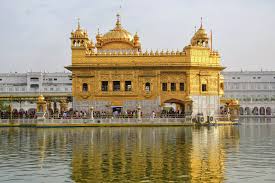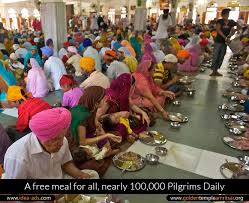The Golden Temple, also known as Sri Harmandir Sahib, is renowned for several reasons, making it one of the most visited and revered spiritual sites in the world:
- Religious Significance: It is the holiest site in Sikhism and serves as a spiritual hub for millions of Sikhs worldwide. The temple is home to the Guru Granth Sahib, the central religious scripture of Sikhism, and a place where Sikhs gather for prayer and reflection. This makes it a pilgrimage site, attracting devotees from across the globe.
- Architectural Beauty: The temple’s dazzling gold-plated exterior and its central location amidst the sacred Amrit Sarovar (Pool of Nectar) create a serene and visually stunning experience. Its blend of Hindu and Islamic architectural styles, with intricate gold and marble designs, has made it a global architectural marvel.
- Historical Importance: Built in the 16th century by Guru Arjan Dev Ji, the fifth Sikh Guru, the temple holds a deep connection to Sikh history and resilience. Over the centuries, it has witnessed attacks and renovations, including its destruction and restoration after Operation Blue Star in 1984. The temple has always been rebuilt with more strength and devotion, symbolizing the enduring spirit of Sikhism
- Symbol of Unity: The temple has four entrances facing in all directions, symbolizing its openness to people from all walks of life, regardless of religion, caste, or creed. This inclusivity embodies the values of Sikhism—equality and service to humanity.
In which state is the Golden Temple located?
The Golden Temple is located in Amritsar, a major city in the Punjab state of India. Amritsar is not only a spiritual center but also a historically significant city with deep roots in the Sikh religion and India’s struggle for independence. Visitors to Amritsar can easily access the temple from Sri Guru Ram Dass Jee International Airport or Amritsar Junction Railway Station, both of which connect the city to major Indian and international destinations
Why is the Golden Temple called “Temple” and not “Gurdwara”?
While Sikh places of worship are usually referred to as gurdwaras, the term Golden Temple has become widely accepted due to its international fame:
- Colonial Influence: During the British colonial period, non-Sikh visitors often referred to the temple as the “Golden Temple” because of its striking gold-coated exterior. This term stuck and became the commonly recognized name for the site.
- Global Appeal: The term “temple” is more universally understood, helping non-Sikhs to relate to the structure as a place of worship. For many tourists, the word “temple” is familiar, even though the site is technically a gurdwara, which is specific to the Sikh faith.
- Aesthetic and Spiritual Magnificence: The term “Golden Temple” reflects the awe-inspiring beauty and sacred atmosphere of the site. It transcends religious boundaries, making it a pilgrimage destination for people of various faiths.

What do Sikhs do in the Golden Temple?
The Golden Temple is more than just an architectural wonder; it is an active place of worship where Sikh religious practices are carried out daily. Here’s what you can experience:
- Prayer and Meditation: Devotees gather to offer prayers and meditate. The Guru Granth Sahib is recited throughout the day, and the peaceful environment is perfect for spiritual reflection.
- Kirtan (Devotional Singing): The Golden Temple is famous for its continuous kirtan (singing of hymns), which takes place inside the sanctum. Listening to these sacred hymns while sitting near the serene Amrit Sarovar is a deeply calming experience.
- Langar (Community Kitchen): One of the most important practices at the Golden Temple is langar, a free community meal provided to all visitors. Thousands of people are served each day, regardless of their background or status, highlighting the Sikh values of seva (selfless service) and equality.

- Pilgrimage and Ritual Cleansing: For many Sikhs, visiting the Golden Temple is a significant religious pilgrimage. Many devotees perform a ritual cleansing by bathing in the Amrit Sarovar, which is believed to purify the soul before entering the temple for worship【64†source】.
- Offering and Seva (Selfless Service): Visitors to the temple often participate in seva, volunteering their time to serve food in the langar, clean the temple premises, or perform other community-oriented tasks【66†source】.
Conclusion
The Golden Temple is not only famous for its religious and architectural significance but also as a symbol of inclusivity, unity, and resilience. Located in Amritsar, Punjab, it welcomes millions of visitors annually, including pilgrims and tourists from around the world. Whether you’re listening to the mesmerizing kirtan, participating in the langar, or simply admiring the temple’s golden façade, the Golden Temple offers an unforgettable spiritual and cultural experience for all.
